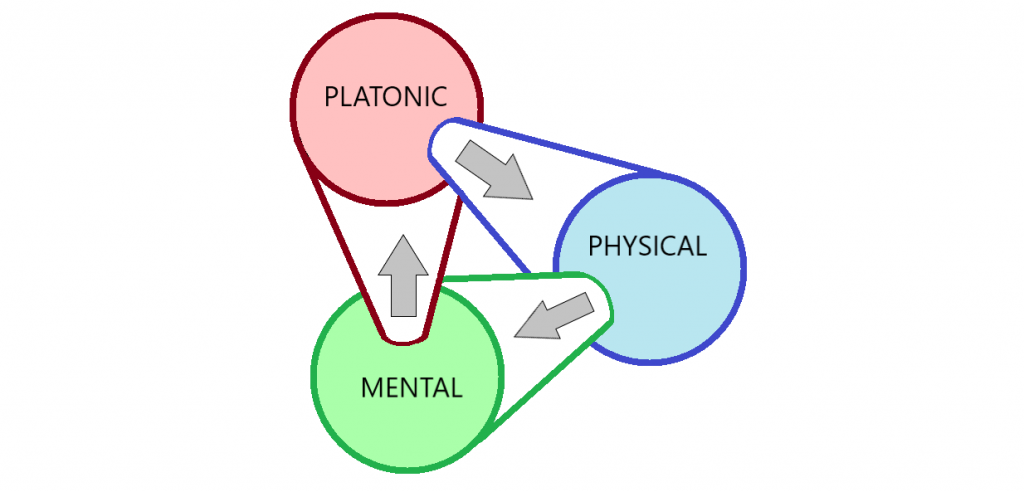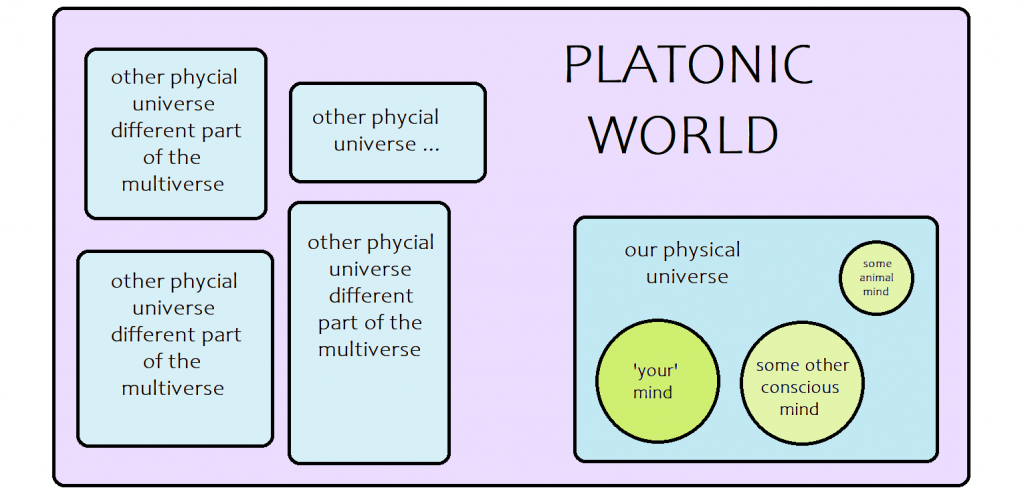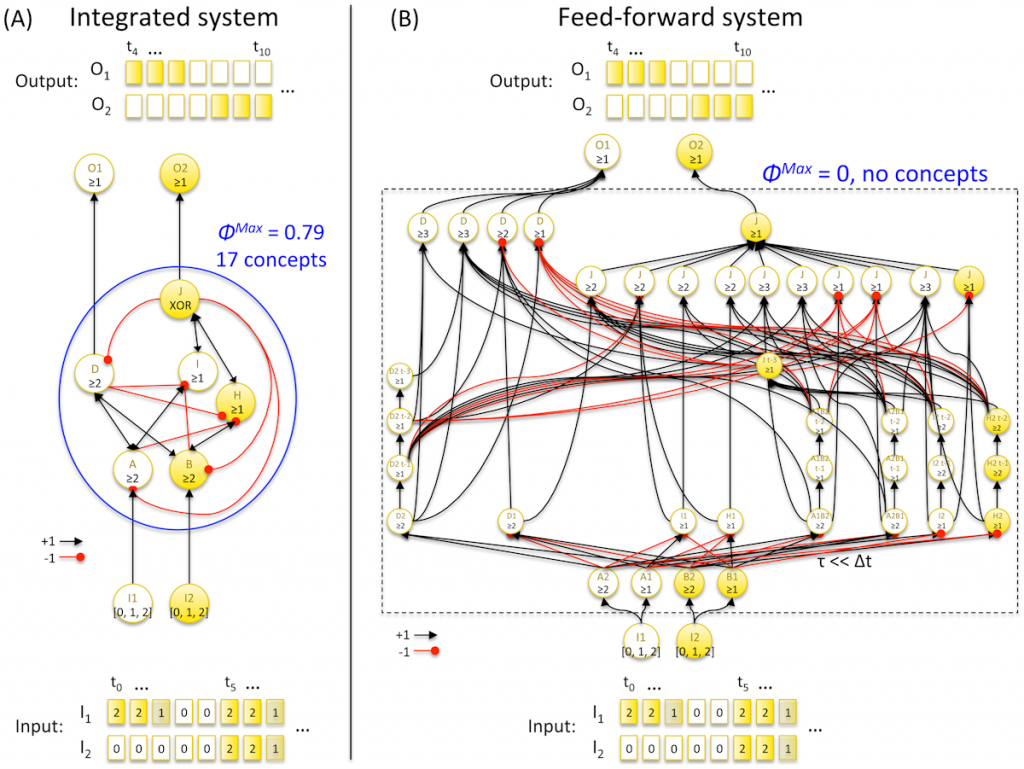What the teleporter thought experiment reveals about the nature of consciousness
The quest for consciousness could be considered the holy grail of philosophy. To be specific, the topic is the subjective aspect of consciousness, the “qualia” , not to be confused with awareness. For some the question remains forever outside of the realm of the scientific method, because it is inherently “objective” and cannot be applied to the subjective experience of the individual. For others it may be outside of the scope of hard science for now, but this may change with new insights in neuroscience and perhaps physics. Then there is a line of thought, that somehow tries to explain away that there even is a problem. Consciousness is described only as a awareness and an “internal model”. To explain the difference and unequivocally show that this approach is insufficient all it takes is considering the difference between simulated and ‘real’ consciousness. A computer algorithm, or “chinese room” may simulate the reaction of a conscious being, but can do so in a way that does not have any “qualia” or even and “internal model”. Some insight what consciousness may ‘actually’ is can be gained from the “teleporter” thought experiment. One side note, before proceeding: as this topic is not political wikipedia is very helpful here. All terms in quotation marks are used in the sense they are defined there, unless stated otherwise.
The question is what happens when you get teleported. The first concept of a teleporter comes from science fiction movies. A person steps in at position A, disappears and reappears at position B. In some scenarios such a teleporter can produce a duplicate, for example a copy at B is created but also at another position C, which raises immediate the question: Who is the ‘real’ one? If it is ‘you’, that was teleported, where are ‘you’? Even in the case without duplicate, one might feel uneasy of really stepping into such a machine, suspecting that one may actually be killed and replaced by a copy. What is going on depends crucially on the actual mechanism of the teleporter. No kind of such teleportation is currently possible, but there are some relevant scenarios that are in line with the known laws of physics, that can shed light on these questions.
First physics: at the heart of quantum mechanics is a concept that seems to avoid the duplication paradox, the uncertainty principle. One cannot measure every property of particles at the same time with arbitrary precision. The most famous, so called, “noncommuting observables” are momentum and position. A related concept in quantum mechanics even has the name “no-cloning theorem”. On the other hand, there is also a topic called “quantum teleportation”. To summarize the core constraints from modern physics in easy language:
- One can not make perfect copies.
- What makes a particle different from another one of its kind is its quantum information – and nothing else. Elementary particles like each have some characteristic properties. Electrons, quarks, photons, etc. are identical everywhere and at any time in the universe. But they can have some properties, “quantum information”, that make them different from another one of its kind, e.g. their location and .the orientation of their spin.
- One can transfer the complete quantum information about a particle to another one, for price of thereby interfering with the original one, and losing information about it. The new one becomes the old one, just in a different location.
Thus, if one could hypothetically performing this kind of quantum-teleportation to every particle of you, there would be no problem with measurement and uncertainty principle. There would be also no question in who is the real you, as duplicates are impossible. You just got moved in a strange way. From the conceptual point of view where your mind resides, this method of transportation is no more mysterious than taking the train.
Second: Neurobiology. There is no comprehensive scientific theory of consciousness in this field, it is currently limited to studying “neural correlates of consciousness”. So we need to be careful to not make too much assumptions about the relationship between brain and mind, but from a biological standpoint it might not be necessary to make a qubit-perfect copy of you, to consider something a duplicate of you. The body and the brain are constantly changing, cells get replaced, cells get repaired. When you wake up after a long night of sleep your brain changed considerably on a microscopic level, yet you feel that you are still yourself, that time has passed during the sleep and that you are on a continuous timeline.
Now consider this teleportation scenario: You get half of the particles in your body quantum teleported from A to location B, and the other half to location C.
Before initiating this, all particles are measured with enough precision that would allow to create a very crude copy. The number and arrangement of nerve-cells and synapses should be preserved, and the difference between clone and original should not be more than that before and after a night of sleep. Conceptually the precision of the measurement could be pushed quite far without causing a significant measurement problem. For example, only a small fraction of all sodium ions in a nerve cell would have to be measured to infer the overall electric state. This information about the state immediate before the quantum teleportation shall then be used to replace and restore the missing other half. Then we can ask again, which one will be you? Where are you, at B or C? Or did you die, and two clones have been created? Do not evade the question by putting yourself into the role of an observer, obviously there is no conflict for a third person, put yourself into the position of the subject. Compare it with a train ride during the night: When you arrive at B or C by this half-move-half-copy teleportation you and your brain will be less different than when you got there by sleeper car. There seems to be only one answer that resolves this paradox, and it is as amazing as it is disturbing. The philosophical concept that provides the answer is called “information realism”.
The most comprehensive description of “information realism”, without using this designation, is in the book “Our Mathematical Universe” from the physicist Max Tegmark. He claims: Our external physical reality is a mathematical structure. The physical universe is not merely described by mathematics, but is mathematics. It is a very specific mathematical structure, one of many other possible Universes, which in this concept are equally really, just causally disconnected. This of course implies that mathematics is an “external reality”. To illustrate this idea with an example: 2+2=4 is universally and always true, no matter if there are countable physical objects, no matter what symbol one would use and even independent from a conscious entity doing the calculation. Math as a separate realm is a very old view, going back to Plato. The much more famous philosophical classification has been for a long time “Dualism”, that is the idea that there are two “realms”: the mind, the spiritual, the soul being the one and the physical, objective world being the other. A diagram that illustrates this “Trialism” I first saw from Roger Penrose goes looks like this:

In this view, our physical world is only a subset of the mathematical world. The mechanism in the brain that produces consciousness is a subset of the physical world, but is doing the thinking in the platonic world. A diagram that corresponds better to information realism looks like this:

Those who know it, this indeed looks like panpsychism, and so far is equally hand-wavingly vague. To see how and why a specific subset of a mathematical structure, or in other words a specific set of “information” would be identical to a state of consciousness a more concrete formulation is required. This is provided by the the “Integrated Information Theory” from Giulio Tononi. Where the “Mathematical Universe Hypothesis” (MUH) could be seen ans the arrow from Math to Physics in the first diagram, IIT is the arrow from Physics to Mind. (The inventor of IIT sees it as a physical theory, and while he does not seem to subscribe to MUH, IIT is not really excluding that.) There is no any way around carefully reading the papers on his site to be able to grasp the idea: integratedinformationtheory.org
His own introductory description is:
Integrated information theory (IIT) attempts to identify the essential properties of consciousness (axioms) and, from there, infers the properties of physical systems that can account for it (postulates). Based on the postulates, it permits in principle to derive, for any particular system of elements in a state, whether it has consciousness, how much, and which particular experience it is having. IIT offers a parsimonious explanation for empirical evidence, makes testable predictions, and permits inferences and extrapolations.
I have long struggled to find a good elevator speech to describe IIT in my words, with limited success: This would be it:
According to IIT the brain has a maximum of “complexity” or “inherent information” that goes beyond the individual part, on a certain spatial and temporal resolution. This defines the duration and temporal structure of specific thoughts and qualia. The key difference to other theories about consciousness is, that it could make precise predictions, although not at the current technological level. An specific external alteration or extension of a brain, could be calculated to correspond to a complex, new conscious sensation in the test subject, which can be reported on by the test-subject. A system can perform the same input-output function with different internal layout. The internal configuration can be such than it has a high internal interdependence or non at all. It is this internal interdependence, which defines how the system is “more than the sum of its parts”, and identical to the subjective “experience” of the system – its conscious state. The difference also solves the “chinese room” mystery: A simulated conscious being is not necessarily actually conscious. This is illustrated by the following graph from Tononi’s 2014 paper:

Back to the teleporter experiment. What does “information realism” predict? How can it help resolve the paradox?
The answer is, that both are clones, and the subject that was teleported ceased to exist. Both are very close to the original, but are not identical to the original. Expanding on that, the astonishing realization follows, that the same applies without teleportation. All the time, every day, after every thought that passed, ‘you’ cease to exist. A clone of you will likely follow, but this is not you. The version of yourself that may exist in a few moments from now is as distinct from your conscious self as any other near-perfect clone. It is objective, an external object for you, and has no overlap with what your are right now – subjective, conscious. This conclusion seems inescapable to me, this is the only interpretation of the teleporter thought experiment that is consistent. Please let me know if I’m missing something here. Otherwise there is not much else to say, what one makes of this, is something that everyone has to answer to himself.
